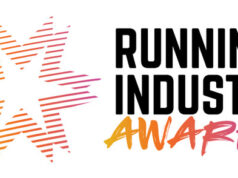The half marathon is a great distance. It’s long enough to be a stamina stretch but doesn’t require the extra training demands of a full marathon. Half marathons are perfect ways to push a few boundaries, to run further or faster than before, yet they’re also a realistic and achievable goal to work towards.
Why bother with a half?
For marathon runners, it’ll do you good to drop down a distance, reduce your mileage and up your speed. Being in PB half marathon shape also represents a great springboard to catapult you into your best marathon build-up ever.
For regular 10K racers, stepping up to the half marathon will help to develop your strength, stamina and running efficiency. This means when you drop down a distance again, you’ll be stronger for longer and so able to crank up the intensity.
However, don’t underestimate the half as ‘neither here nor there’. You’ll certainly know about it if you hit 10 miles and have over-cooked the first half. Equally, you’ll be frustrated if you chug round in the comfort of marathon pace.
You’ve got to put in some serious training miles and deliver some key workouts to achieve a better half marathon. Let’s look at what it takes.
Things you will need to smash your half marathon PB
01. An established running routine. Regular running develops a strong aerobic foundation, stamina, strength and staying power. These are the fundamentals of a better half marathon. Regular running gives you the confidence, both physically and mentally, that you can complete the half marathon distance and achieve your personal aspirations.
02. Brilliant running economy. You need to be efficient. You need a great respiratory system to suck in air and a strong heart to pump oxygenated blood around your body and directly to your working muscles at a powerful rate.
03. A consistent routine nailed. Think about the structure of your current routine. What do you already do that works? What can you do in your routine to create more space and time for training? What can you do in your routine to change and improve what you already do?
04. Be a distance dominator. You’ll need a tolerance for racking up the miles, be motivated, and have an efficient running style that conserves energy and allows you to tick along at a high relative intensity for a sustained amount of time.
05. An understanding of how to run at different paces. How to control these for different distances and how to hit your target race pace.
Get to know your race pace
The right training should help you understand your pace and arrive at the start line of your half with a clear grasp of how to run at your target race pace – whatever that might be. If your goal is to run sub-2hrs for the half marathon, it’s crucial to know what running 9:09min/miles feels like. Don’t spring any surprises on your body on race day; it won’t thank you for it by mile nine. Knowing, understanding and experiencing your target race pace in your training will give you the confidence to set a challenging finish goal. But don’t try and run the full half marathon at race pace in training.
Assessing and understanding your potential race pace comes with repeated exposure (i.e training) at paces close to your goal often with rest periods in between. Knowing your race pace will help you practise this in training and get it right on race day.
Structuring your approach
Training is done to make race day feel easier, at least, that’s the theory. Dull training is all done at the same pace, with little variety and stifles motivation. Exciting training on the other hand, is full of change, highly motivating and fun and much better for you!
Throughout a 12-week training plan, your key sessions each week will be drawn from long runs, long paced runs, tempo runs, interval sessions, (threshold and speed) and recovery runs. These will differ in distance and pace depending on an individual’s ability, but the essence of the session is the same.
Getting the right mindset
Running a fast half marathon is as much in the head and the heart as in the legs and lungs. Although your engine might be capable of running faster than you’ve run before, if your mind isn’t ready to go the distance, you may stutter mid-race. Confidence to run fast in a race comes from confident training. Give yourself race-day confidence by completing workouts in training that prove your goal is attainable.
• Negative thoughts may creep in mid-race when your legs are burning and your heart is pounding. Remind yourself that you’ve been here many times in training and can handle the pressure and the pace right through to the finish.
• Break your race down into mental checkpoints: 3 miles, 6 miles, 9 miles, 12 miles, the final 1.1 miles. Only focus on covering the next 3 miles. Tick off each section as you go.
• Tune into your running zone. Keep it simple and just run. Being right at the sharp end of half marathon discomfort means that you are going to have moments in the race when the pace feels too hot to handle. Instead of crumbling and slowing down, do what you’ve done in training and switch off the outside world and dial into your own running groove. Get in the zone. Feel your heartbeat, your breathing rate and sense your foot strike. Relax and run.
How to taper
If you plan to race at your max, leave the fast or tough running alone the week before your half marathon race. Your training has been done in the months and weeks prior to the event not in the final few days before it. Ten to 14 days before the event you will want to ‘ease down’ or ‘taper’. This involves a reduction in the volume of your running in the week leading up to the race. Run for less time and less often than you would in a normal week.
Practise your target race pace for 3 x 0.5-mile efforts and include a few short (30secs) acceleration runs three or four days before you race. Your goal in race week is to stay injury free, healthy and focused. Don’t be tempted to ‘test yourself out’ in the final few days before you race; if you’ve completed the training, your race will be a success!
Race day strategy
The art of running a great half marathon is with your race pacing. It’s not like a marathon where you start off under control and try not to slow down, or a 10K when you’re on the knife-edge of comfort from the gun. Instead, it’s a tempo-balancing act. You should feel like you are running strongly from the start, but that this is controlled effort that you can sustain for the full race distance. As the miles tick away, your goal is to hold an even pace (the same time per mile or kilometre). The effort level required to do this will almost certainly go up as the race goes on and especially if the terrain changes. What feels like a controlled tempo pace for the first six miles will feel harder to maintain during the final three miles. But that’s the point.




